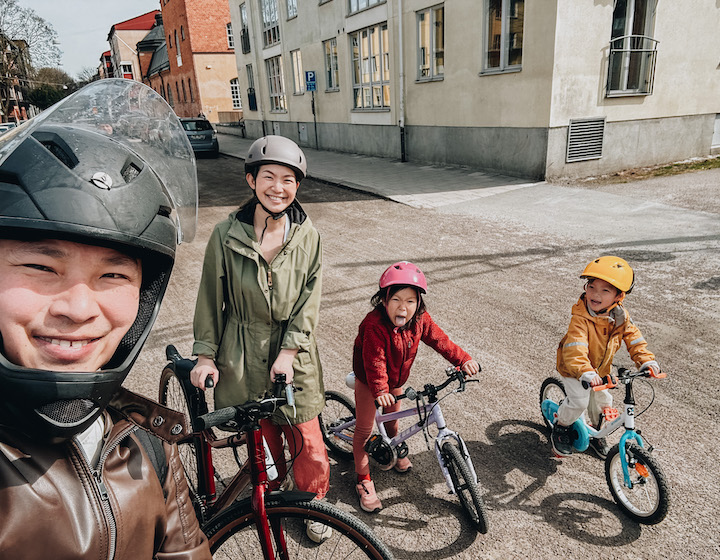
 Post Category - ParentingParenting
Post Category - ParentingParentingSingaporean mama Min Koh talks about life in Sweden where they get 480 days parental leave per child, dads are encouraged to be “Latte Pappas”, the primary caregivers at times and parents do chores at her kids’ preschool.
We last interviewed Singaporean Min Koh when she was an overseas mama living in Barcelona. Min is now living in Sweden with her two kids, husband and dog. Here’s a peek into her life where she raves about cooking on open fires, swimming in lakes, and ice-skating in the winter. Min loves that in Sweden they get 480 parental days for each kid and the culture encourages fathers to step into the primary caregiving role at times — there’s even a humorous term called “Latte pappas” — where fathers actively participate in parenting and hang out with fellow dads at coffee shops. Her kids go to school at a parent co-op preschool where parents share ownership and have a say in decision-making and share responsibilities such as cleaning (which she says is humbling and nurtures a strong sense of community!) while kids nap outdoors even when it’s -20 degrees outside! Read on for her enlightening interview about family life in Sweden!
Click here to read about other Overseas Singaporean mamas!
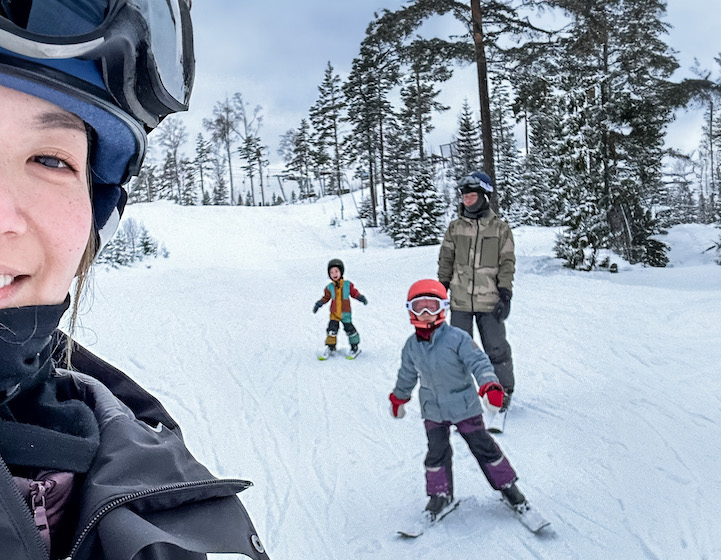
Can you tell us a little about yourself?
I’m Min! My husband and I are from Singapore but currently call Sweden our home. I’m a product designer in the Fintech world, while my husband dives into the Video Game industry as a Producer. Our dynamic duo, Ju and Re, are our kids, aged 5 and 7. And let’s not forget Obi, our lovable mixed black retriever, who’s practically our third child.
Weekdays are all about work and school, but come the weekend, you’ll likely find outdoors! During our free time, we love to explore a little more of Sweden and embrace the local seasonal activities. You will find us cooking on an open fire all year round, when summer comes around, you’ll find us camping and taking dipping in the lakes. Then, when winter arrives, we like to hit the frozen lakes for some ice-skating, skiing and sledging down the snowy hills!
What brought you to Sweden? How long have you been living overseas (tell us about the four countries starting with S that you say you have lived in)?
It’s always been my husband who is the one who opens these doors. What are the odds of living in countries beginning with the letter S? So far, we’ve called Singapore (of course), South Korea, Spain, and now Sweden. Come next February, it’ll mark a whole decade since I left Singapore. Time sure zooms by with kids.
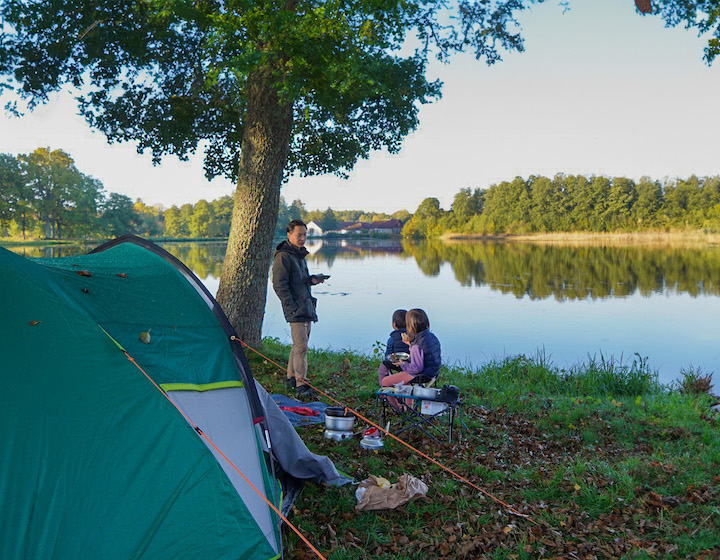
Favourite aspect about living in Sweden?
I’ve noticed that this country places a strong emphasis on raising kids, and I absolutely appreciate how the infrastructure is so supportive of working parents. It’s great that both parents are encouraged to have careers, and the whole system here really caters to full-time working parents. Having a whopping 480 parental days for each kid is pretty remarkable. We’ve got this thing called “Vård av Barn,” which roughly translates to “care of child.” It allows you to take time off when your child is unwell. On top of that, it’s quite common for folks to take four consecutive weeks of summer vacation. In fact, they actively encourage taking those vacation days. And let’s not forget the part I love the most – the shared responsibility between both parents, whether it’s taking care of the kids or handling household matters.
In most cases, kids typically begin preschool around age one or when they start walking. A common practice here is that mothers take a 6-month maternity leave, followed by fathers taking another 6 months while the mother returns to work. I believe this approach really encourages fathers to step into the primary caregiving role, and it’s a fantastic way to strengthen the bond between dad and child. We even have this humorous term called “Latte pappas” – It’s all about this cultural trend in Sweden where fathers actively participate in parenting, especially during the early years of their kids’ lives. You’ll often spot these dads arranging playdates at coffee shops or getting involved in various parent-child activities, hanging out with other dads and their little ones.
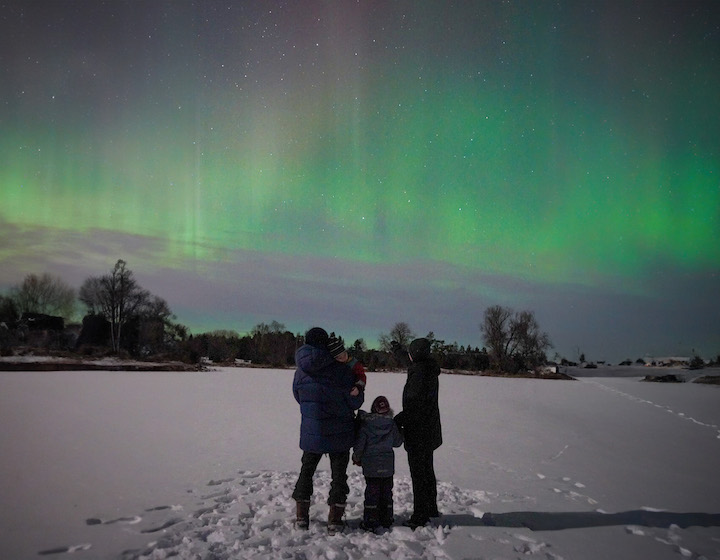
And the worst part?
The darkness in winter really gets to me. Those days before the winter solstice can be a bit of a downer, especially when daylight savings time kicks in. Where I’m at, during the November to early December stretch, the sun doesn’t show up until around 10 in the morning and calls it a day by 3.50 pm. It can be depressing when you’re leaving for work in the dark and coming home in the dark. It’s just one of those things that can hit you, and can never prepare for it.
How do you think parenting (and school) in Sweden differs from in Singapore? What do you appreciate most about it?
I can only share from my own experience, but this is something that often surprises people back home. Both of my kids attend (and attended) what they call a parent co-operative (föräldrakooperativ) preschool here. These parent co-op preschools are typically owned and operated by a cooperative of parents. This means that parents have a say in decision-making and share responsibilities for running the preschool, including handling the school’s finances. For instance, we take turns with cleaning duties and we also pitch in with dishwashing on a regular basis. By parents putting in hours of work, the school can use its resources to do more for your child, mainly spending on resources like pedagogy, food and staff.
It can be pretty exhausting to spend an extra three hours cleaning the school in the evening after a full day at work. But what I really value about this arrangement is how it nurtures a strong sense of community and trust among parents, children, and the staff. There’s something genuinely humble about it that I find quite special.
Another aspect that has made several waves on the internet is that the children here take their naps outdoors, all year round, and they do it in strollers. It’s not a practice at every school, but it’s something my children’s school does. Rain or shine, even when it’s as cold as -20 degrees outside, the kids have their naps outdoors. This might seem unusual, but it’s actually a long-standing tradition deeply rooted in Nordic countries. They believe it has several benefits, including providing fresh air, improving the quality of sleep, and boosting the immune system.
What I love most about the education system here is that it always centres around the child’s pace, emphasizing outdoor activities and play. My 7-year-old still isn’t reading or writing, but that’s perfectly okay. The focus is primarily on play-based learning, socialization, and building essential foundational skills. I remember during our first parent-teacher meeting at my older child’s primary school, most of the questions were directed to my child, not us or the teacher. They asked things like, “Do you feel safe at school?” “Do you have friends you play with?” “Do you know what to do when you need help?” “Do you feel safe at home?” It was quite refreshing for us to see the emphasis on the child’s perspective and well-being.
Here in Sweden, kids are on equal footing with adults, their opinions and voices are valued and respected from a young age. It’s a society where children’s rights and perspectives are taken seriously, and they are encouraged to participate in decisions that affect their lives. This approach fosters a sense of independence, responsibility, and self-confidence in children. It’s about creating an inclusive environment where everyone’s voice matters, regardless of age. The downside is that you can end up with kids who might call the shots on what they eat, what activities they want to do, and even when they feel like sleeping. It can be a real challenge to strike that balance.
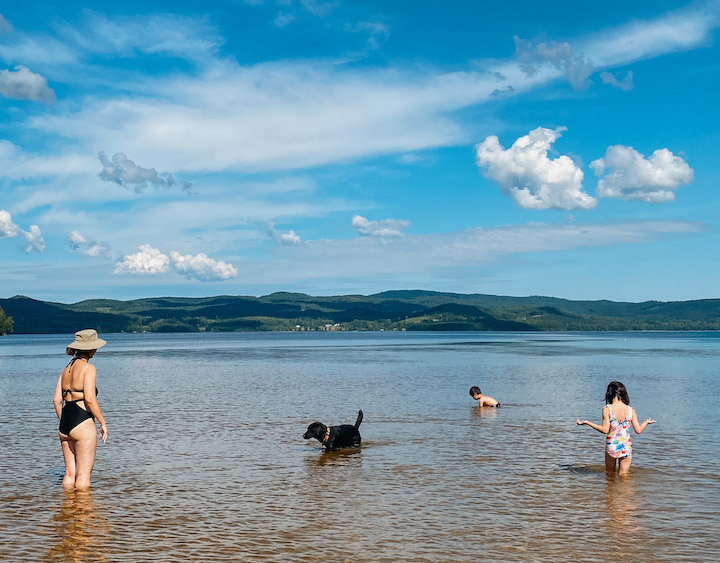
Given you have lived in multiple countries with kids – how would you describe the differences between each location?
I can’t really compare South Korea because we only had kids in Spain. But I would say that the education system in Spain feels more similar to Singapore’s, where there’s still a sense of hierarchy and it’s more teacher-centred. What stood out to me in Spain was how affectionate all the educators were. It seemed like Spanish culture really values tradition and history, and you could see that reflected in the curriculum and educational materials. Where we lived, Catalan was the main language, and there was a lot of pride and emphasis on it.
On the other hand, Sweden feels more student-centered to me. Here, teachers strive to actively involve students in their learning process, nurturing critical thinking and creativity. Right from preschool, Sweden places a strong emphasis on gender equality in education. They make a real effort to challenge traditional gender roles and encourage both girls and boys to explore a wide range of subjects and careers. And it starts from an early age – I remember seeing pictures of girls in uniforms and boys in pink, and various depictions of what a family unit could look like hanging on the walls of the preschool restroom.
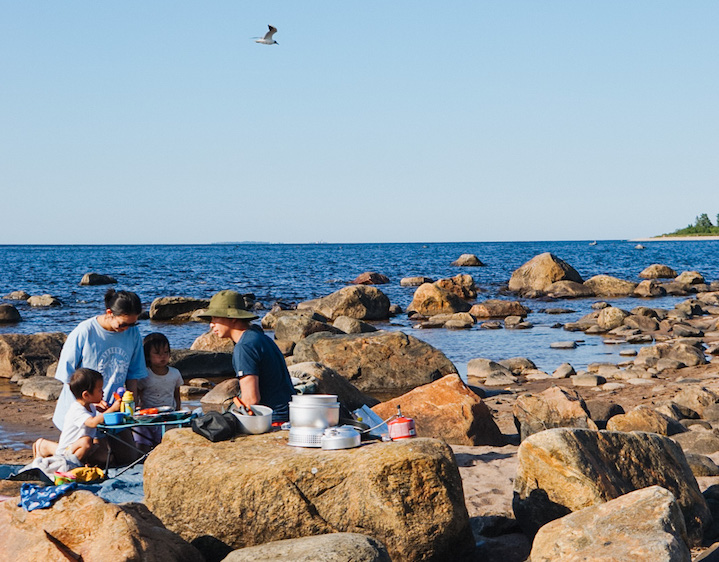
Do you have a favourite country and why?
This is a hard one, but it’s like comparing apples to oranges for us. We have such different, but equally deep, affection for all the places. Korea was absolutely ideal for us when we didn’t have kids. The city never slept, and we had a blast with all the exciting nights out and various activities. But I can’t really picture living there with kids at this stage in our lives. Then we adore Spain for its lively culture, rich history, warm people, oh how they adored kids and that wonderful weather where everything just moves at its own pace. And then, there’s Sweden, which we love for its incredible outdoors, work-life balance, and the whole holistic way of life, especially when it comes to raising kids. I feel like all of them were the right fit for different chapters in our lives.
Can you talk us through your career pre- and post-kids?
To be honest, I didn’t fully grasp just how much time and attention kids could demand. I remember foolishly thinking I could dive back into work just a month after giving birth to my first child. Oh, the naivety! Without a village, I had to significantly slow down. Work had to take a backseat. By the time my second child arrived, I was much better prepared. I took the time to settle into a life with two kids and fully embraced the fact that our lives were forever changed.
I believe the major turning point came when we moved to Sweden. Once the kids were comfortably settled into school here and started becoming more independent, it felt like the right time for me to re-enter the workforce. However, nobody really tells you how daunting it can be for a mother to even consider going back to work after an extended period at home.
Now, I can say that my career is finally getting back on track, and it feels fantastic to move into my next chapter of life.
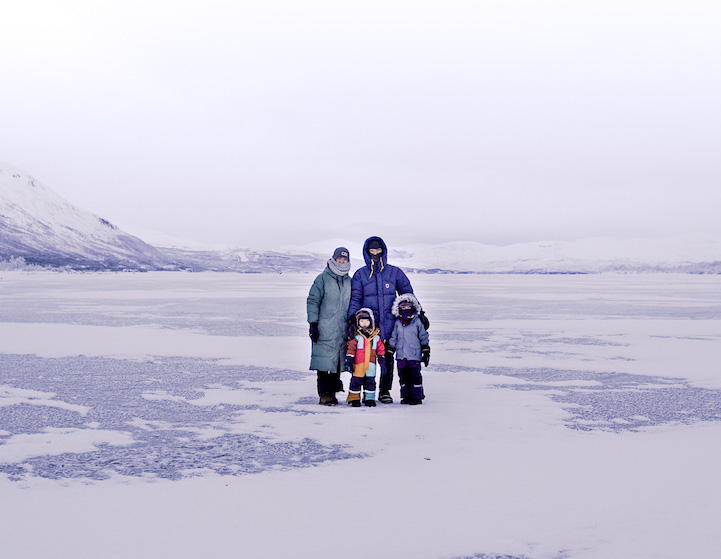
Top five places in or around Sweden you would recommend to parents travelling with kids and why.
- A road trip across the West Coast in Summer. Summer is the best time of the year in Sweden. You have beautiful coastal towns like Smögen, Hållö and Fjällbacka. Then you have islands to explore like Väderöarna and Sweden’s first national marine park, Kosterhavet.
- Kiruna and Abisko. The Lapland is not to be missed when in Sweden. I think all seasons are pretty amazing but there’s something special about visiting the North in Winter. Take the overnight sleeper train from Stockholm (my kids absolutely love it). Sleep at the ice-hotel, see the Northen lights, ride over a frozen lake on a dog-sled and learn more about the Sami people and their history and culture.
- Of course you definitely need to stop by the capital of Sweden, Stockholm. There is so much to see and do in Stockholm, Skansken is an air-open museum and there’s always something for everyone there all year round, Junibacken is another museum that contains all the literature and stories written by the greatest Swedish author, Astrid Lindgren such as Pippi Långstrum.
- Skuleberget. For families who are a bit more adventurous, Hoga Kusten is a great place, you have views of mountains and fjords and excellent hiking routes. The Skuleberget itself holds excellent views of the high coast’s archipelago and it’s an easy trail with kids that leads up to the best viewpoints. And then have lunch at the top cottage where they serve waffles and Goulash soup.
- Uppsala, this is actually where we are based. It’s a quaint university town and it’s perfect for a day trip from Stockholm.
What is the local cuisine like?
In addition to what we all know, meatballs, other traditional dishes include dishes like gravlax (cured salmon), Janssons frestelse (a potato and anchovy casserole), and kåldolmar (cabbage rolls). Sweden loves their pastries and desserts like semla (a cream-filled bun), kanelbullar (cinnamon buns), and prinsesstårta (princess cake) are popular treats we have while having Fika, my personal favourite is the cardamon bun.
Is there something that you do to keep your children in touch with their Singaporean roots?
We love watching NDP parades together! Some years we would meet other fellow Singaporeans over picnic or potluck with lots of local dishes. There is nothing like having full on Singlish conversations!
Best souvenir one could bring back from Sweden
for a child: A handcrafted wooden horse – the Dala horse, often brightly painted in red, blue, or green, is a symbol of Swedish folk art or Swedish children’s books, especially those featuring well-known characters like Pippi Longstocking.
for a mama friend: A Swedish beauty or skincare product like L:A Bruket or a jar of Swedish lingonberry jam.
What do you find is the hardest part of being a mother living in a foreign country?
Language, while I understand the most bits, my spoken is still rather limited and I believe this limitation can sometimes act as a barrier to fully engaging with the local communities.
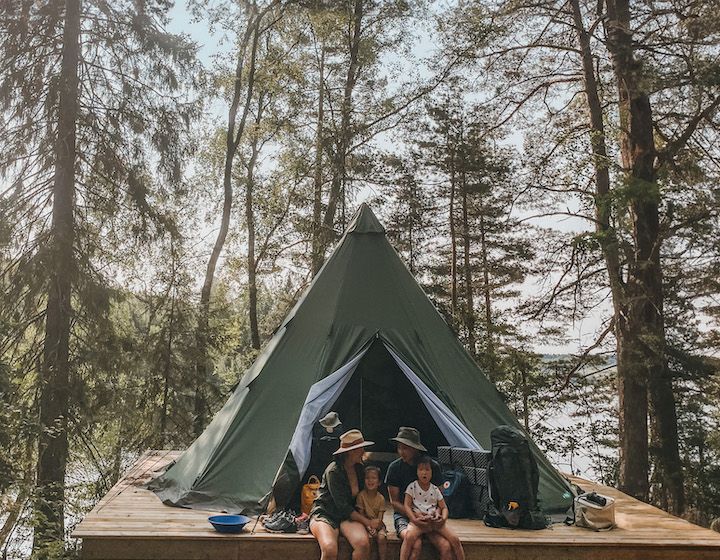
On raising multilingual children …
They only speak English and Swedish at the moment. Swedish 100% in school and English 100% at home. That said, I’m not too concerned with them not learning Mandarin at this age since we almost never use it. I learnt my 3rd, 4th and 5th language in my 20s and 30s so I think it’s still possible to pick that up later.
What do you always bring back from Singapore for yourself and for your children?
Chilli and Kaya! Also kueh lapis from Bengawan Solo.
Tell us about your go-to recipe for your family.
Taiwanese Minced Pork Noodles (Rou Zhao Mien)! It’s so easy to cook, and I pair it with either rice or noodles.
What’s the one thing you would miss about Sweden if you moved away?
The nature and all the adventures here, and I love the pace here.
What is the first thing you do each time you come back to Singapore?
Zhi char dinner with my in-laws!
What do you dread most if you are moving back to Singapore?
How fast-paced and crowded the city is.
Thoughts on your children moving back and joining Singapore’s education system?
I’ll think about it if and when the time comes! No doubt it will be a tough uphill battle for the kids to assimilate into a whole different system with very different values and priorities. But from a bigger picture I think it could be opportunities for growth and I would like to think that Singaporeans generally do pretty well competitively on a global level.
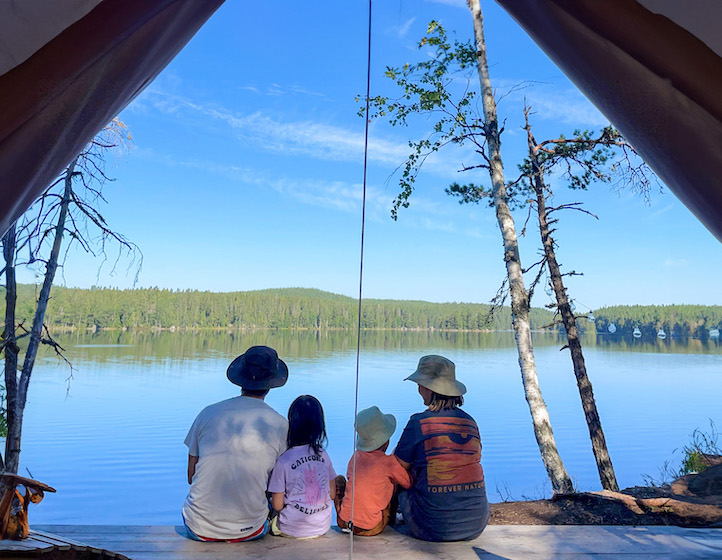
How do you think Singaporeans can benefit from living overseas?
Exposing ourselves to diverse cultures, language skills, and a global perspective, I think it fosters personal growth. Additionally, it offers a fresh perspective on Singapore and its culture. Overall, living abroad can be a transformative and enriching journey and so I would encourage anyone to live abroad if you ever have the opportunity to, even just for a while.
Do you have plans to move back to Singapore, stay in Sweden or move again (and if so where next)?
Based on our experience, it seems that our life plans never quite unfold as planned. Leaving Singapore was never in our initial plans, but life has a way of surprising us haha. So, I’ve learned not to set my sights too far ahead. I’m always open to the possibility of moving again, and if I had to pick, I’d love to experience living in an even quieter place, perhaps somewhere up north, away from the hustle and bustle.
Thanks so much for sharing about life in Sweden, Min — we look forward to following your adventures on Instagram!
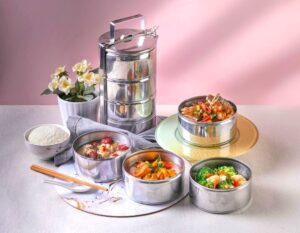


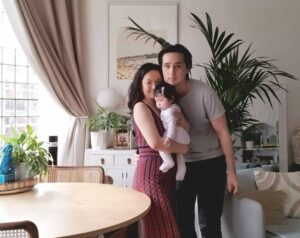
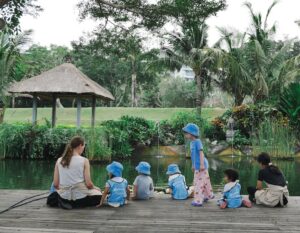

 View All
View All



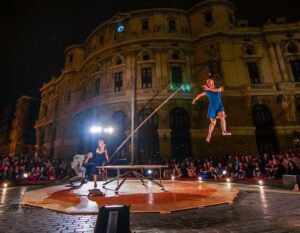
 View All
View All


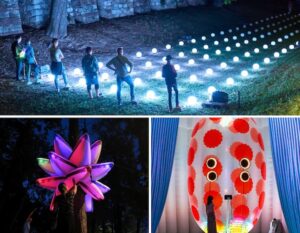






 View All
View All




